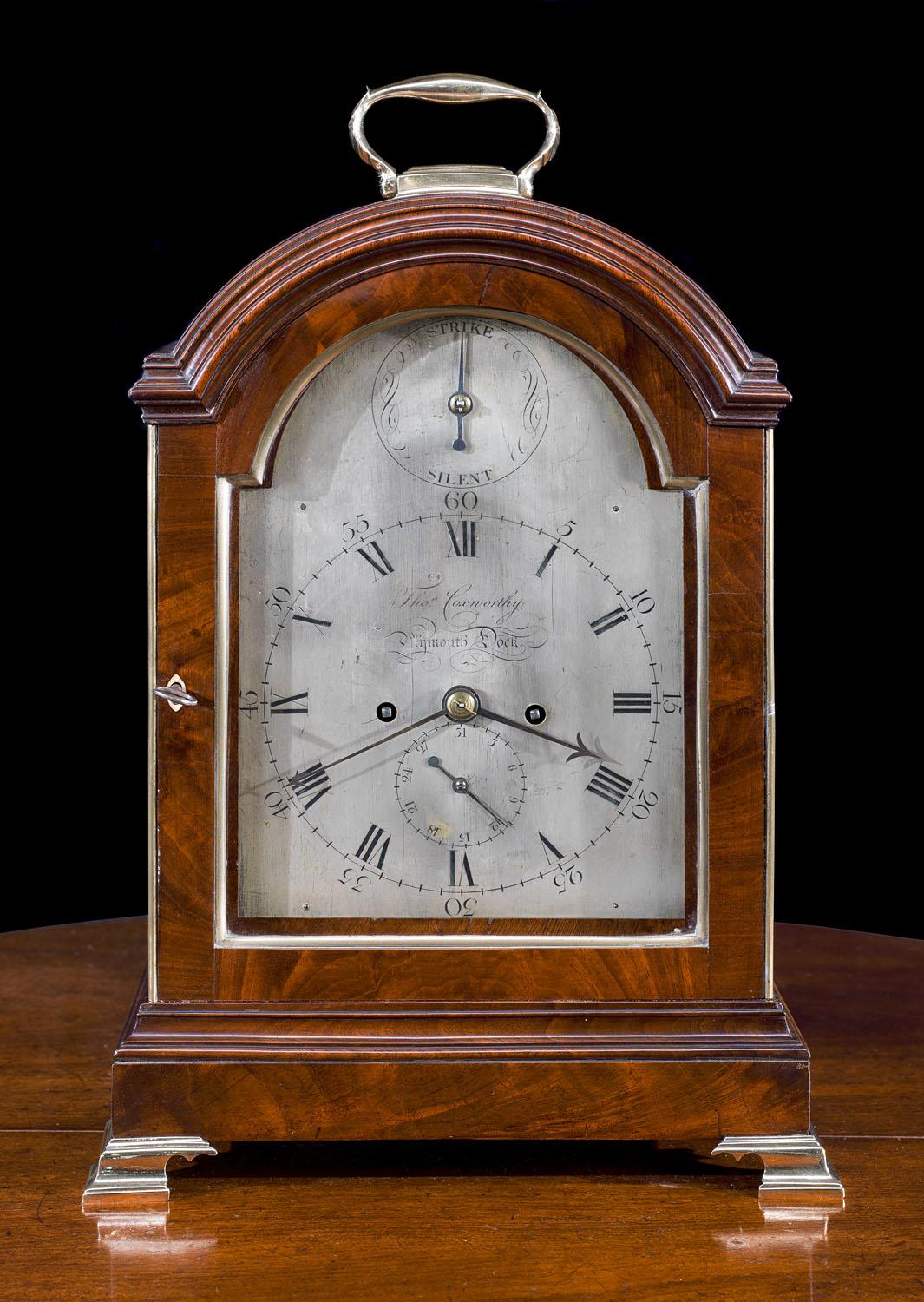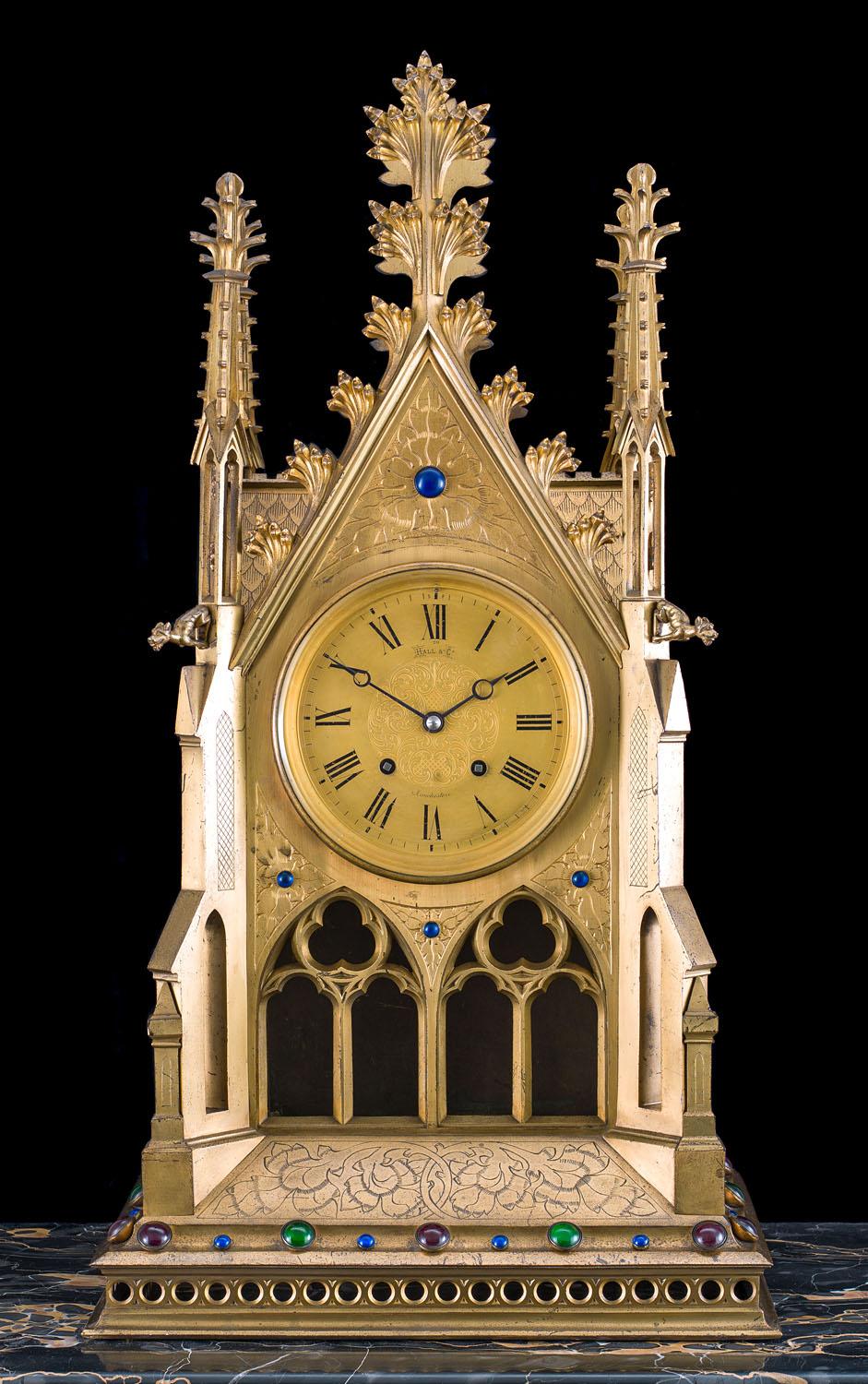Antique clock identification is seen as an exciting, sometimes challenging, puzzle for collectors to solve.
There is something immensely rewarding about identifying an antique clock. Recognising the model and identifying the date and the maker leads to a greater understanding of the story behind these special objects.
The history of clocks is a fascinating one. Many are surprised to learn that mechanical clocks were first seen at the beginning of the 14th century in Europe, while the pendulum clock was invented in 1656.
While uncovering a device as old as that is almost impossible nowadays, antique clocks are uniquely collectible thanks to both their beauty and the immense technical expertise behind their mechanisms.
Let’s look in more detail at antique clock identification and how to identify antique clock makers’ marks.

× 
Maker or company’s name on antique clocks
Given the prestige of such individuals and companies, it’s not entirely uncommon to find their names upon the clock itself
Throughout history (at least the history of clocks) there have always been celebrated clock makers such as Jacques Thuret, clockmaker at the court of Louis XIV, as well as esteemed manufacturing companies.
Given the prestige of such individuals and companies, it’s not entirely uncommon to find their names upon the clock itself. Certainly, this makes the process of identification significantly easier!
For example, this 18th century flame mahogany clock by Thomas Coxworthy has the maker’s name on it.
Names may be found in different places depending on the maker. It’s sometimes found engraved or printed near the centre of the dial, other times around the edge.
Equally, it may be engraved on the backplate of the clock movement.
Engravings last, whereas paper labels pasted to the back or inside of a clock case often don’t survive, meaning other routes of identification must be pursued.
Using marks to identify a clock
Serial numbers, patent marks and trademarks can all serve as major clues in the antique clock identification process
Antique clocks made in the United States tend to feature names more commonly than those produced elsewhere.
Identifying clock makers’ marks becomes a little more complex in this case in that some additional research will likely be required.
Fear not though, there are plenty of resources available online and in print with books such as Old Clocks and Watches and their Makers by F. J. Britten considered a bible for many who identify antique clocks.
Serial numbers, patent marks and trademarks can all serve as major clues in the antique clock identification process.
Not all clocks will have a serial number, indeed most don’t, and the location of the detail does vary. However, a serial number is certainly a great lead in the investigation.
Patent marks are an interesting aid to identification. Note: antique clocks often include imported mechanisms and are assembled with parts coming from different places. A patent mark may identify the mechanism but not the source of the completed clock.

× 
Identifying a clock without makers’ marks
English, French and German clocks all feature distinct and well documented styles
If there are no names or marks to assist with antique clock identification, there are other things to look for.
Firstly, consider the style of the clock. English, French and German clocks all feature distinct and well documented styles.
The materials used in clock production also serve as clues. The type of glass, the material of the dial – whether paper, ceramic, or tin – or the casing (note: plywood was not used on clocks until 1905) can all help a collector narrow in on who made their clock and where.
Unsurprisingly, the movements within clocks changed over time and therefore this can be a useful indicator in terms of judging an antique clock’s age.
If you’re reading this article from the United States, it’s worth knowing that from 1896 all imported clocks had to feature a clear mark denoting country of origin. By knowing the country in which an antique clock was made, you can immediately rule out certain makers and companies.
Antique clock identification: how to identify antique clock makers' marks
Antique clock identification and correctly identifying makers’ marks is a vast topic and does require a level of research to carry out effectively.
If you have hit a dead end or haven’t the expert knowledge, there are individuals who specialise in helping collectors to identify their antique clocks.
However, the thrill of identifying an antique clock is something special and while we’ve only been able to touch on the subject in this blog, there are numerous resources available online and via the National Association of Watch and Clock Collectors.
If you’d like to discuss this article, enquire about our range of antique clocks or find out more about the work we do at Westland, don’t hesitate to get in touch.